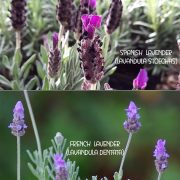"What plants are green on top and purple underneath?"
That is the question that I will answer in this article.
Plants with green leaves and purple backs are without a doubt a spectacular decoration of any home. The good thing is that they easily fit into interiors and attract attention when grown as stand-alone plants or in combination with other green species.
The specific color of their leaves comes from the pigment called Anthocyanins which absorbs green colors from the light spectrum, creating irresistible purple, burgundy, or pink shades. Although there are a large number of such plants in nature, below we list the ones that are most sought-after and space-reviving houseplants.
Contents
Most Popular Plants that Are Green on Top and Purple Underneath
Alocasia Amazonica Polly
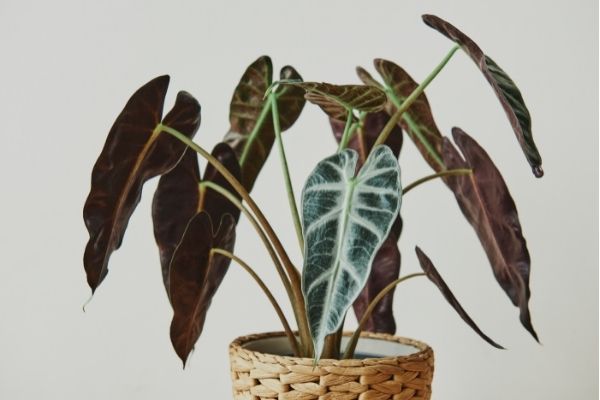
Alocasia Amazonica Polly is a robust hybrid species known as the African mask plant or African Elephant Ear plant. Despite its name, this plant has nothing to do with the Amazon region because it is an artificially created cultivar whose ancestors originate from the tropical areas of Asia and Australia.
Like other plants in the Araceae family, the whole plant contains poisonous calcium oxalate, which can cause serious health problems in both humans and pets.
Yet, the magnificent, evergreen plant with large, arrow foliage with pronounced white nervation and the dark burgundy reverse is one of the most beautiful plants you can grow indoors.
Although it is not the easiest plant to grow, its out-of-this-world appearance is worth a little extra effort. It requires a warm, humid environment and a lot of diffused lighting.
The plant loves moisture, so feel free to water it during the growing season at least twice a week and once every seven or 15 days in winter. Regularly clean its shiny leather leaves with slightly serrated edges using a damp cloth! Dry air, impermeable soil, and low temperatures are the main enemies of this plant. Therefore, mist it often, and never expose it to temperatures below 55 F or direct light!
Oyster Plant
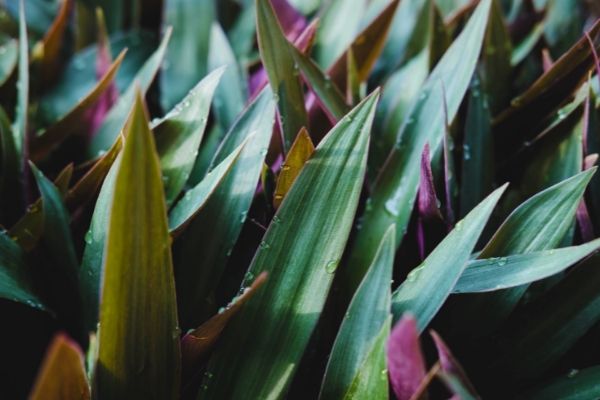
Oyster plant (Tradescantia spathacea), also known as Boat lily and Moses-in-the-cradle, originates from Brazil, Guatemala, and Mexico. It is a resistant and hardy plant that grows well in containers as a houseplant, but it can also be planted in the garden in areas with mild winters.
Its erect lanceolate leaves, up to six inches long with purple reverse grow densely on stems forming spiral rosettes. Each node on its thickened, brittle, watery stem in contact with the ground quickly takes root, making the plant pretty invasive outdoor. It also means the plant propagates gladly by cuttings in water or directly in the soil.
The intensity of the color of its leaves depends on the amount of light the plant receives. Plants in the deep shade lose their purple tones, but they are equally unhappy with exposure to direct bright sunlight. It is an undemanding houseplant that tolerates short periods of drought.
Hemigraphis Exotica Purple Waffle
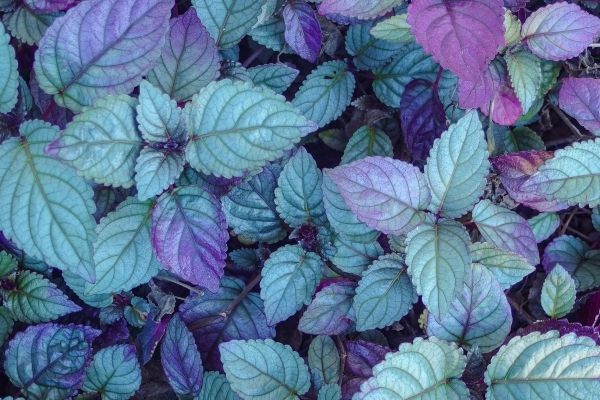
In its natural environment in Southeast Asia, purple waffle grows as a low ground cover along the banks of streams and rivers. That is why it can often be found on sale as an aquarium plant. Yet, it cannot live in water constantly.
The right environment for this low bushy beauty of small, wrinkled, ovate, glossy maroon-purple leaves and wine red beneath is terrariums and paludariums. In addition, this plant will enjoy conditions with high levels of humidity.
If you want to grow it in a room, as all other houseplants, plant it in a slightly acidic to a neutral substrate with a pH of 6 to 7, spray its leaves regularly, or place it on a pebble tray because it does not tolerate dry air.
As a garden plant, it can only thrive in USA climate zones 10 to 11, while in all other areas, it spends the winter inside, protected from low temperatures.
Calathea Rattlesnake
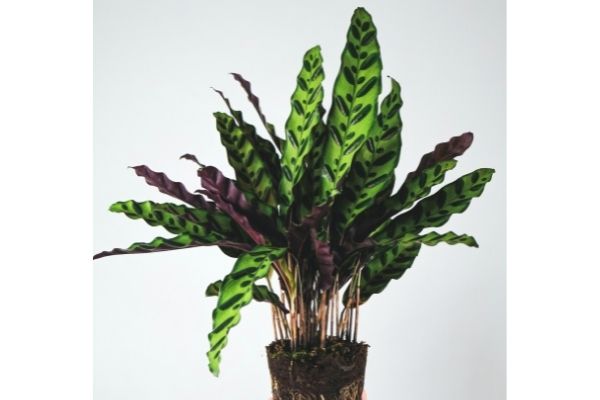
Calathea Rattlesnake (Goeppertia insignis) or Calathea lancifolia is another gem from the prayer plant family that will bring a tropical atmosphere to your living room. This plant that originates from the rainforests of Brazil has elongated leaves with a wavy edge with a strappy, spotted dark green pattern and deep purple undersides.
Like other family members, it likes shaded places with indirect lighting and moderately moist but not soaked soil. If the growing conditions are favourable, the plant blooms with small yellow-orange flowers in late spring and early summer.
Folding leaves at the end of each day is a spectacular sight and a reason more to host this tropical beauty in your home.
if you enjoy this type of content, check out Top 14 Finest Smelling Herbs for Indoor Growing
Ctenanthe Plant
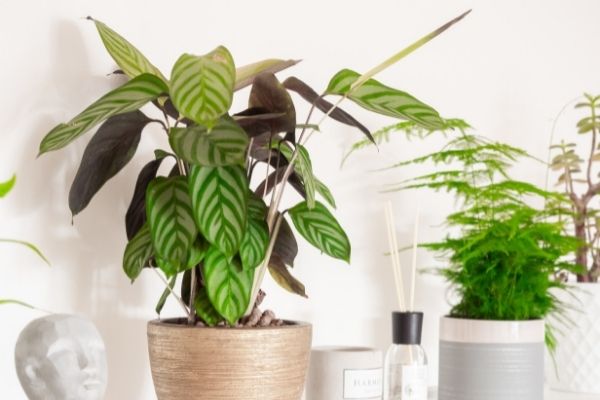
Ctenanthe plant, also known as the Never Never plant, or the Giant Bamburanta, is a charming plant from the Marantaceae family that comes from the rainforests of Northeast Brazil. This unique plant is characterized by large silver-green striped oblong leaves that grow densely from the rhizome root.
It grows best in a semi-shaded place, well-drained soil, and a warm and humid environment similar to its homeland. Therefore, provide it with extra moisture by spraying the leaves, using a humidifier, or placing it in a bathroom.
Since it is sensitive to mineral and salt build-up from tap water, you could water it only with stagnant soft water. Also, you should keep it away from drafts, cold air currents, and low temperatures!
Stromanthe Sanguinea
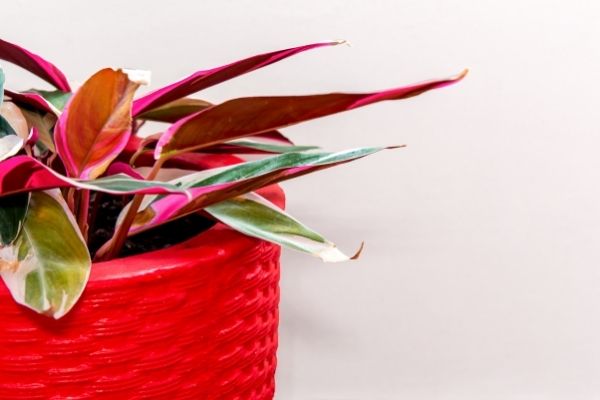
Stromanthe Sanguinea Triostar or Tricolor Stromanthe is a gorgeous perennial with vivid, almost artistic white and green colored leaf surface and intense purple reverse that is especially pronounced at night when this unique plant folds its foliage. Due to its fantastic coloration, it is one of those eye-chatting plants that is almost impossible not to notice.
Although considered the 'star' and the most sought-after plant of the Marantea family, growing Stromanthe Sanguinea Triostarthis is not much more demanding than growing any other tropical plant.
In other words, provide it with bright but indirect lighting, the humidity of at least 60%, highly permeable nutritious soil, and moderate watering. And of course, do not expose it to low temperatures, nor move it often, because it is difficult to adapt to new conditions.
Calathea veitchiana
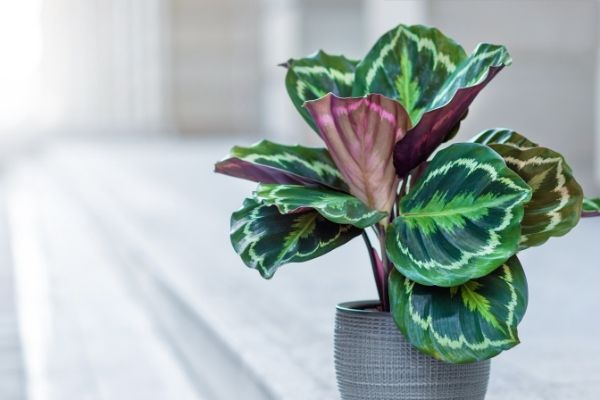
Few plants can boast of such artistically painted leaves as Calathea Veitchiana or Calathea Medallion. The gorgeous masterpiece of nature from the Marantaceae family originates from the jungles of the Amazon and South America, where it grows in the shade of high tropical vegetation.
Its delicate, round, broad leaves react strongly to adverse conditions. Therefore, if you want to share your space with this living work of art, you need to pay special attention to the increased humidity levels, a uniform temperature between 65 and 80 F, and relatively moist but never too soaked soil.
Gynura Sarmentosa
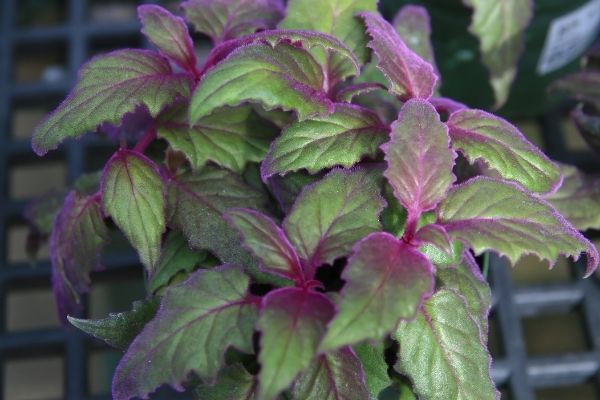
Photo by David J. Stang.
This extraordinary plant with nettle-like leaves covered with thick purple hairs looks so velvety that you would want to touch it! The refined Gynura sarmentosa or Purple Passion Plant naturally grows in tropical Asia as a small shrub with shoots that rely on each other. As an indoor plant, Gynura can grow in hanging baskets with the stems spreading in all directions.
It likes a warm and humid environment, but you should not spray its hairy leaves! Although it is perennial, its beauty fades with time, and in just a few seasons, it loses color and becomes very inconspicuous. Fortunately, it propagates easily by cuttings in water, so it is best to grow a new plant every other season. Also, constantly pinching the tops will extend its lifespan.
The plant blooms with tiny orange flowers that have an unpleasant odor! Therefore, it is best to remove them as soon as they appear.
Wandering Jew
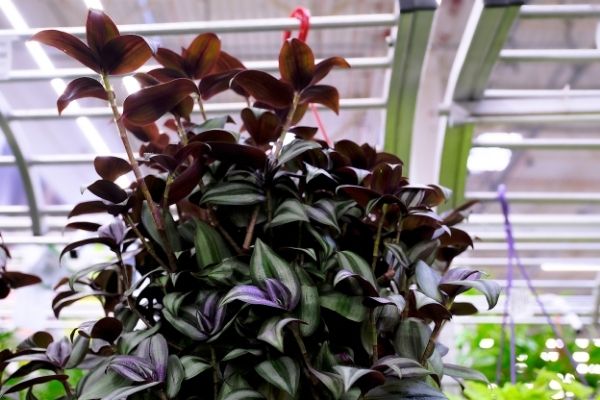
Wandering Jew, Tradescantia zebrina, Zebrina Pendula, or Inch plant is a modest, durable, and enchantingly colored low creeper that naturally grows in woodland and open fields in Mexico.
Its oval, three to four inches long, oppositely arranged shiny leaves of silver-green stripes and intensely colored reverse grow densely on watery, thick stems. It looks great in hanging baskets and on east and west windows, forming two to three feet long, colorful cascades.
Wandering Jew, Tradescantia zebrina, Zebrina Pendula, or inch plant is modest, durable, and enchantingly colored low creeper that naturally grows in woodland and open fields in Mexico. Its oval, three to 4 inches long, oppositely arranged shiny leaves of silver-green stripes and intensely colored reverse grow densely on watery, thick stems.
It looks great in hanging baskets and on east and west windows, forming two to three feet long, colorful cascades. One of the simplest plants to grow with a wide tolerance range to different conditions can be successfully cultivated even by complete beginners!
Apart from freezing temperature, swampy soil, and all-day exposure to the bright sun, this fantastic plant easily tolerates everything else!
One of the simplest plants to grow with a wide tolerance range to different conditions can be successfully cultivated even by complete beginners! Apart from freezing temperature, swampy soil, and all-day exposure to the bright sun, this fantastic plant easily tolerates everything else!
Conclusion
All the plants that we have discussed in this article are green on top and purple underneath. These are only 9 of the most popular plants that have these characteristics. There are many more plants that look like this.
I hope you enjoyed this article, if you did, check out Top 20 Trendy Plants for South-Facing Windows


